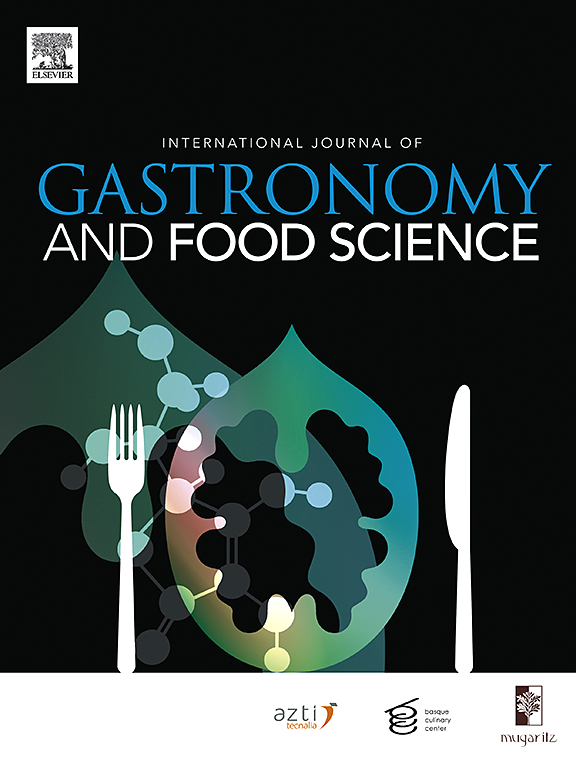Evaluation of street food consumption patterns, vendor practices, and Salmonella enterica contamination in street tacos
IF 3.2
2区 农林科学
Q2 FOOD SCIENCE & TECHNOLOGY
International Journal of Gastronomy and Food Science
Pub Date : 2025-01-10
DOI:10.1016/j.ijgfs.2025.101112
引用次数: 0
Abstract
Street food is trendy in various countries, particularly in developing regions. This study aimed to investigate street food consumption patterns, vendor practices, and the prevalence of Salmonella enterica in tacos street stalls. An online survey was conducted to understand street food consumption behavior, and samples from taco street stalls were analyzed to determine the presence of S.enterica. The survey revealed that most of the population consumes street food (96.4%) primarily for their taste (44.5%). Tacos were the most commonly consumed street food products (36.6%). Of the consumers, 80.3% perceived having experienced a gastrointestinal illness due to the consumption of a particular street food. Visual inspection of street taco stalls showed that almost none of them have a stall with glass protection (98.6%). Additionally, vendors did not use gloves or hairnets. S enterica was found in street taco stalls (7/85 8.2%): red salsas (4/53 7.5%), green salsas (1/34 2.9%), onion and coriander raw mix (2/81 2.5%) and tacos (1/85 1.2%). These results underscore the importance of implementing education and training measures for street vendors, as well as enforcing stricter inspections to regulate various aspects that affect the food safety.
求助全文
约1分钟内获得全文
求助全文
来源期刊

International Journal of Gastronomy and Food Science
Social Sciences-Cultural Studies
CiteScore
5.30
自引率
10.50%
发文量
170
审稿时长
45 days
期刊介绍:
International Journal of Gastronomy and Food Science is a peer-reviewed journal that explicitly focuses on the interface of food science and gastronomy. Articles focusing only on food science will not be considered. This journal equally encourages both scientists and chefs to publish original scientific papers, review articles and original culinary works. We seek articles with clear evidence of this interaction. From a scientific perspective, this publication aims to become the home for research from the whole community of food science and gastronomy.
IJGFS explores all aspects related to the growing field of the interaction of gastronomy and food science, in areas such as food chemistry, food technology and culinary techniques, food microbiology, genetics, sensory science, neuroscience, psychology, culinary concepts, culinary trends, and gastronomic experience (all the elements that contribute to the appreciation and enjoyment of the meal. Also relevant is research on science-based educational programs in gastronomy, anthropology, gastronomic history and food sociology. All these areas of knowledge are crucial to gastronomy, as they contribute to a better understanding of this broad term and its practical implications for science and society.
 求助内容:
求助内容: 应助结果提醒方式:
应助结果提醒方式:


